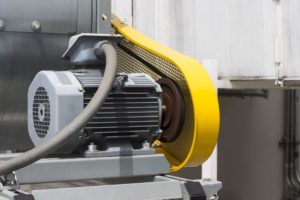Plant and Machinery
Plant and machinery can pose a wide range of hazards to workers and bystanders. These hazards can’t be dealt with in isolation because one hazard can lead to another – for example, entanglement with a rotating part can lead to drawing-in and eventually crushing.
Machinery hazards can be sub-divided into mechanical hazards and non-mechanical hazards.
Mechanical hazards include crushing, shearing, cutting or severing, entanglement, drawing-in or trapping, impact, stabbing or puncture, friction or abrasion and high-pressure fluid injection or ejection.

Non-mechanical hazards are dependent on the type of machinery, which may include; electrical, noise, vibration, radiation and ergonomic hazards.

Guarding offers a viable solution for mechanical hazards, if you can’t eliminate or reduce the hazard in any other way. Guards should be chosen in the following order of priority:
1. Where you don’t need access to the danger zone under normal operation:
• fixed guard
• interlocking guard
• trip device.
2. Where you need access to the danger zone under normal operation:
• interlocking guard
• automatic guard
• trip device
• adjustable guard
• self-adjusting guard
• two-hand control.
The condition of plant or machinery should be inspected on a regular basis to ensure that it remains in good condition and all safety features including guards and stop controls are operational.

Your employer must develop procedures to make sure work equipment is:
• suitable for its purpose
• set-up and used to minimise risks
• well-maintained
• inspected
• operated by trained users.
